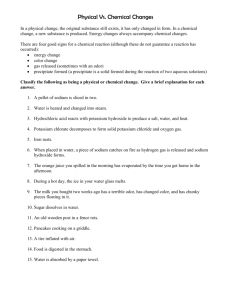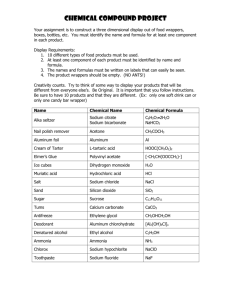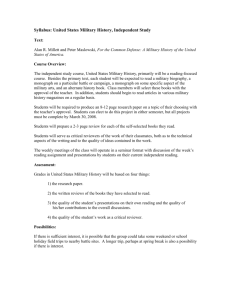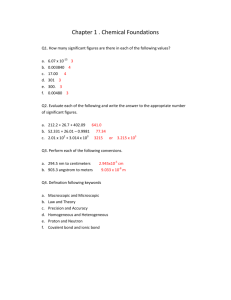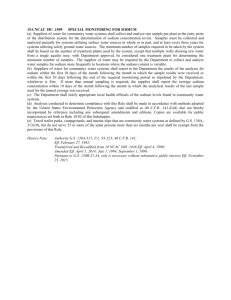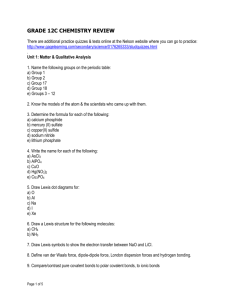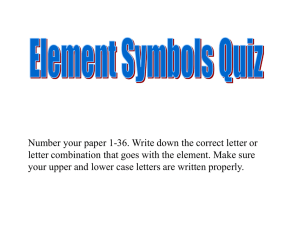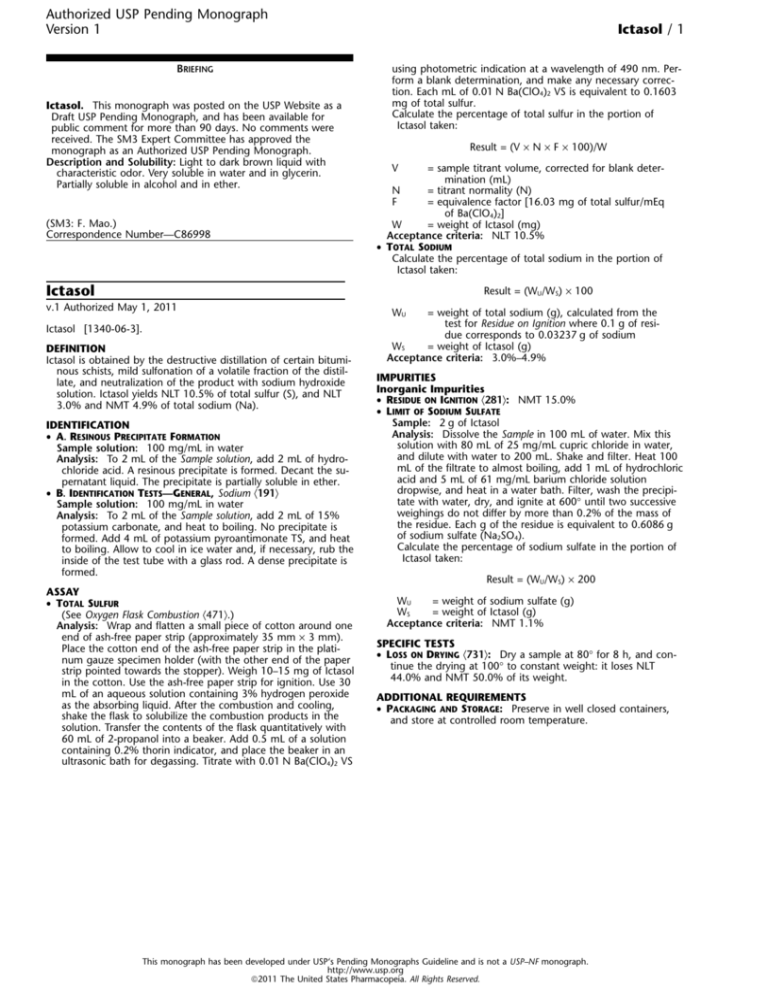
Authorized USP Pending Monograph
Version 1
BRIEFING
Ictasol. This monograph was posted on the USP Website as a
Draft USP Pending Monograph, and has been available for
public comment for more than 90 days. No comments were
received. The SM3 Expert Committee has approved the
monograph as an Authorized USP Pending Monograph.
Description and Solubility: Light to dark brown liquid with
characteristic odor. Very soluble in water and in glycerin.
Partially soluble in alcohol and in ether.
(SM3: F. Mao.)
Correspondence Number—C86998
Ictasol / 1
using photometric indication at a wavelength of 490 nm. Perform a blank determination, and make any necessary correction. Each mL of 0.01 N Ba(ClO4)2 VS is equivalent to 0.1603
mg of total sulfur.
Calculate the percentage of total sulfur in the portion of
Ictasol taken:
Result = (V × N × F × 100)/W
V
= sample titrant volume, corrected for blank determination (mL)
N
= titrant normality (N)
F
= equivalence factor [16.03 mg of total sulfur/mEq
of Ba(ClO4)2]
W
= weight of Ictasol (mg)
Acceptance criteria: NLT 10.5%
• TOTAL SODIUM
Calculate the percentage of total sodium in the portion of
Ictasol taken:
Ictasol
.
Result = (WU/WS) × 100
v.1 Authorized May 1, 2011
Ictasol [1340-06-3].
DEFINITION
Ictasol is obtained by the destructive distillation of certain bituminous schists, mild sulfonation of a volatile fraction of the distillate, and neutralization of the product with sodium hydroxide
solution. Ictasol yields NLT 10.5% of total sulfur (S), and NLT
3.0% and NMT 4.9% of total sodium (Na).
IDENTIFICATION
• A. RESINOUS PRECIPITATE FORMATION
Sample solution: 100 mg/mL in water
Analysis: To 2 mL of the Sample solution, add 2 mL of hydrochloride acid. A resinous precipitate is formed. Decant the supernatant liquid. The precipitate is partially soluble in ether.
• B. IDENTIFICATION TESTS—GENERAL, Sodium ⟨191⟩
Sample solution: 100 mg/mL in water
Analysis: To 2 mL of the Sample solution, add 2 mL of 15%
potassium carbonate, and heat to boiling. No precipitate is
formed. Add 4 mL of potassium pyroantimonate TS, and heat
to boiling. Allow to cool in ice water and, if necessary, rub the
inside of the test tube with a glass rod. A dense precipitate is
formed.
ASSAY
• TOTAL SULFUR
(See Oxygen Flask Combustion ⟨471⟩.)
Analysis: Wrap and flatten a small piece of cotton around one
end of ash-free paper strip (approximately 35 mm × 3 mm).
Place the cotton end of the ash-free paper strip in the platinum gauze specimen holder (with the other end of the paper
strip pointed towards the stopper). Weigh 10–15 mg of Ictasol
in the cotton. Use the ash-free paper strip for ignition. Use 30
mL of an aqueous solution containing 3% hydrogen peroxide
as the absorbing liquid. After the combustion and cooling,
shake the flask to solubilize the combustion products in the
solution. Transfer the contents of the flask quantitatively with
60 mL of 2-propanol into a beaker. Add 0.5 mL of a solution
containing 0.2% thorin indicator, and place the beaker in an
ultrasonic bath for degassing. Titrate with 0.01 N Ba(ClO4)2 VS
WU
= weight of total sodium (g), calculated from the
test for Residue on Ignition where 0.1 g of residue corresponds to 0.03237 g of sodium
WS
= weight of Ictasol (g)
Acceptance criteria: 3.0%–4.9%
IMPURITIES
Inorganic Impurities
• RESIDUE ON IGNITION ⟨281⟩: NMT 15.0%
• LIMIT OF SODIUM SULFATE
Sample: 2 g of Ictasol
Analysis: Dissolve the Sample in 100 mL of water. Mix this
solution with 80 mL of 25 mg/mL cupric chloride in water,
and dilute with water to 200 mL. Shake and filter. Heat 100
mL of the filtrate to almost boiling, add 1 mL of hydrochloric
acid and 5 mL of 61 mg/mL barium chloride solution
dropwise, and heat in a water bath. Filter, wash the precipitate with water, dry, and ignite at 600° until two successive
weighings do not differ by more than 0.2% of the mass of
the residue. Each g of the residue is equivalent to 0.6086 g
of sodium sulfate (Na2SO4).
Calculate the percentage of sodium sulfate in the portion of
Ictasol taken:
Result = (WU/WS) × 200
WU
= weight of sodium sulfate (g)
WS
= weight of Ictasol (g)
Acceptance criteria: NMT 1.1%
SPECIFIC TESTS
• LOSS ON DRYING ⟨731⟩: Dry a sample at 80° for 8 h, and continue the drying at 100° to constant weight: it loses NLT
44.0% and NMT 50.0% of its weight.
ADDITIONAL REQUIREMENTS
• PACKAGING AND STORAGE: Preserve in well closed containers,
and store at controlled room temperature.
This monograph has been developed under USP‘s Pending Monographs Guideline and is not a USP–NF monograph.
http://www.usp.org
2011 The United States Pharmacopeia. All Rights Reserved.

